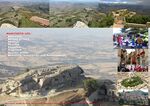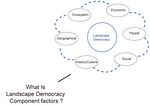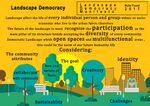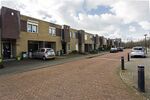LED Online Seminar 2017 - Working Group 10: Difference between revisions
| (23 intermediate revisions by 5 users not shown) | |||
| Line 19: | Line 19: | ||
Image:ROCCA_DI_CERERE_.jpg|Angelo's manifesto | Image:ROCCA_DI_CERERE_.jpg|Angelo's manifesto | ||
Image:DL.jpg|Fouad's manifesto | Image:DL.jpg|Fouad's manifesto | ||
Image: | Image:Manifesto-Malihe.jpg|Maliheh's manifesto | ||
Image:170404_LD_nielsdecouvreur.jpg|Niels' manifesto | Image:170404_LD_nielsdecouvreur.jpg|Niels' manifesto | ||
Image:LANDSCAPE_DEMOCRACY_1.jpg|Yinglan's manifesto | Image:LANDSCAPE_DEMOCRACY_1.jpg|Yinglan's manifesto | ||
| Line 73: | Line 73: | ||
*Landscape Design Concepts | *Landscape Design Concepts | ||
**Value that people can give to areas in their surroundings- Valiable placies | **Value that people can give to areas in their surroundings- Valiable placies | ||
*Participatory design | |||
**Social engineering and participation in Anglo-Swedish housing 1945–1976: Ralph Erskine's vernacular plan, Planning Perspectives.(2013) | |||
| Line 93: | Line 95: | ||
*Design of city and landscape together - | *Design of city and landscape together - | ||
changes in the living environment must follow three basic feature . | changes in the living environment must follow three basic feature . | ||
'''Maliheh Shahghadami:''' | |||
*Censuses design - | |||
The open environment is a common property of all people, the traditional structure is inadequate and public have possibility participate in design and planning. | |||
Making participatory environmental decisions will lead to more effect of environment perception and results to live in a healthy environment. | |||
*....... | *....... | ||
| Line 111: | Line 120: | ||
<gallery caption=" " widths="150px" heights="150px" perrow="5"> | <gallery caption=" " widths="150px" heights="150px" perrow="5"> | ||
Image:Yinglan_Landscape_Democracy__factors.jpg|Yinglan's updated manifesto | Image:Yinglan_Landscape_Democracy__factors.jpg|Yinglan's updated manifesto | ||
Image: | Image:LED_Mulla.jpg|Fouad's updated manifesto | ||
Image: | Image:Updated manifesto NielsDeCouvreur.png|Niels' updated manifesto | ||
Image: | Image:ANGELO.L_MANIFESTO_LED.jpg |Angelo's updated manifesto | ||
Image: | Image:Manifesto 6.jpg|Maliheh's updated manifesto | ||
</gallery> | </gallery> | ||
| Line 130: | Line 139: | ||
=== Landscape Symbols of Fouad Mulla === | === Landscape Symbols of Fouad Mulla === | ||
<gallery caption=" " widths="150px" heights="150px" perrow="5"> | <gallery caption=" " widths="150px" heights="150px" perrow="5"> | ||
Image:LEd 2.jpg |Buda Hill - The Hungarian Kingdom History figure dominate the city as the highest place beside the historican value | Image:LEd 2.jpg |Buda Hill - The Hungarian Kingdom History figure dominate the city as the highest place beside the historican value - Citadella is known now as the freedom symbol of the Hungarian beside that it was the place that protect the city in the History. represent buda City -The Liberty Statue or Freedom Statue | ||
Image:Led_22.jpg |Hungarian Parliament Building - Buda side It is currently the largest building in Hungary and still the tallest building in Budapest | Image:Led_22.jpg |Hungarian Parliament Building - Buda side It is currently the largest building in Hungary and still the tallest building in Budapest -Gyula Andrássy sculpture: He is prime Minister of the Kingdom of Hungary and infront of his sculpture usually hungarian citizen protest against politics actions | ||
</gallery> | </gallery> | ||
| Line 142: | Line 148: | ||
File:Yinglan- Golden Lotus Square.jpeg|The Lotus Square - is an open square in , Macau, China. The area features the large bronze sculpture Lotus Flower In Full Bloom . | File:Yinglan- Golden Lotus Square.jpeg|The Lotus Square - is an open square in , Macau, China. The area features the large bronze sculpture Lotus Flower In Full Bloom . | ||
File:Guia Fortress.jpg|The fortress - was built between 1622 and 1638. Inside the fortress stands Guia Chapel, originally established by Clarist nuns, who resided at the site before establishing the Convent of St. Clare. The chapel's elaborate frescoes depict representations of both western and Chinese themes, displaying motifs of religious and mythological inspiration that are a perfect example of Macao's multicultural dimension. | File:Guia Fortress.jpg|The fortress - was built between 1622 and 1638. Inside the fortress stands Guia Chapel, originally established by Clarist nuns, who resided at the site before establishing the Convent of St. Clare. The chapel's elaborate frescoes depict representations of both western and Chinese themes, displaying motifs of religious and mythological inspiration that are a perfect example of Macao's multicultural dimension. | ||
</gallery> | </gallery> | ||
| Line 157: | Line 161: | ||
Image:Burgplatz.jpg|Burgplatz in Dusseldorf is located on the site of the old castle in Dusseldorf which was built in 13th century at Rheine river. The castle had attracted so many attentions as a painting gallery an later became parliament of Rheinland in Germany. After several fires only the castle tower was preserved. At the Burgplatz the northern Düssel flows into the Rhine, where the banks can be reached by a free-standing staircase. Especially this staircase is a popular meeting place for locals and tourists in summer as public space. | Image:Burgplatz.jpg|Burgplatz in Dusseldorf is located on the site of the old castle in Dusseldorf which was built in 13th century at Rheine river. The castle had attracted so many attentions as a painting gallery an later became parliament of Rheinland in Germany. After several fires only the castle tower was preserved. At the Burgplatz the northern Düssel flows into the Rhine, where the banks can be reached by a free-standing staircase. Especially this staircase is a popular meeting place for locals and tourists in summer as public space. | ||
Image:Koigsallee.jpg|Konigsallee is an urban boulevard in city center of Düsseldorf,Germany. By the end of the 18th century,the duke decided to give room for a more generous urban plan, This plan was made by architects and landscape architects. Later on 2014 the boulevard have been developed as the office and retail center. | Image:Koigsallee.jpg|Konigsallee is an urban boulevard in city center of Düsseldorf,Germany. By the end of the 18th century,the duke decided to give room for a more generous urban plan, This plan was made by architects and landscape architects. Later on 2014 the boulevard have been developed as the office and retail center. | ||
</gallery> | </gallery> | ||
| Line 167: | Line 168: | ||
=== Landscape Democracy Niels De Couvreur === | === Landscape Democracy Niels De Couvreur === | ||
<gallery caption=" | <gallery caption="Ribbon development" widths="150px" heights="150px" perrow="5"> | ||
Image:Ribbondevelopmentwww vilt be.jpg|caption: Ribbon development caused by people and government, create problems for both parties. By working on this matter in Belgium and in The Netherland, I realize that this is a big issue. | Image:Ribbondevelopmentwww vilt be.jpg|caption: Ribbon development caused by people and government, create problems for both parties. By working on this matter in Belgium and in The Netherland, I realize that this is a big issue. | ||
Image:Totalpavementww stadskrant net.jpg|caption: The waterdrainage provided by the government is calculated on the water discharge of the street with extra buffer runoff of private property. However people getting more lazy and don't like spending time gardening. So they put big surfaces of pavement in their garden. Result: increase of water runoff to the drainage system. | Image:Totalpavementww stadskrant net.jpg|caption: The waterdrainage provided by the government is calculated on the water discharge of the street with extra buffer runoff of private property. However people getting more lazy and don't like spending time gardening. So they put big surfaces of pavement in their garden. Result: increase of water runoff to the drainage system. | ||
| Line 228: | Line 229: | ||
<gallery caption="Regenerate the factory " widths="600px" heights="300px" perrow="1"> | <gallery caption="Regenerate the factory " widths="600px" heights="300px" perrow="1"> | ||
Image:Group10_powermap.jpg|''a power map identifying who is affected by the challenge and who is influencing it'' | Image:Group10_powermap.jpg|''a power map identifying who is affected by the challenge and who is influencing it'' | ||
Image: | Image:LED_Assignment_5_Template.pptx.jpg|''Look at the various methods and tools available and think how they can be applied creatively. Think about the needs of different stakeholder groups - you may need a methodical mix to address them all. Illustrate graphically how these methods/tools might be applied in a short, medium and long-term perspective.'' | ||
Image: | Image:Group10_change_process.jpg|''a scenario illustrating how these tools can be applied within a short, medium and long term perspective involving the groups you want to address, this should include a process timeline'' | ||
</gallery> | </gallery> | ||
Latest revision as of 00:31, 12 June 2017
--> Back to working group overview
Dear working group members. This is your group page and you will be completing the template gradually as we move through the seminar. Good luck and enjoy your collaboration!
Assignment 1 - Reading and Synthesizing Core Terminology
- You can read more details about this assignment here
- Readings are accessible via the resources page
Step 1: Your Landscape Democracy Manifestoes
Step 2: Define your readings
- Please add your readings selection for the terminology exercise before April 12:
A: Landscape and Democracy - Mapping the Terrain
- Landscape Democracy Resolution (Angelo.l)
- Resolution Landscape Democracy
Landscape Concepts:
- Burckhardt, Lucius (1979): Why is landscape beautiful? in: Fezer/Schmitz (Eds.) Rethinking Man-made Environments (2012) (Mulla Fouad)
- Accompanying lecture reading: Bruns/Bartolomei, 2016 'Concepts of Landscape' (Fouad)
B: Concepts of Participation
- Day, Christopher (2002): Consensus Design, Architectural Press (Maliheh)
- Burckhardt, Lucius (1957): Urban Planning and Democracy in Landcsape
C: Community and Identity
- Yinglan Reading - Hester, Randolph (2006): Design for Ecological Democracy, The MIT Press
D: Designing
- Pritzker Prize winning architect Alejandro Aravena on sustainable design and community involvement in Chile (Angelo.l)
- Vall, N. (2013): Social engineering and participation in Anglo-Swedish housing 1945–1976: Ralph Erskine's vernacular plan, Planning Perspectives, 28(2), 223-245 (Mulla Fouad)
E: Communicating a Vision
- Niels De Couvreur => 'Reading the Landscape' by Simon Bell, EMU Tartu
- Storytelling example from the Scottish Islands, Stromness: Urban Design Framework
Steps 3 and 4: Concepts Selection and definition
- Each group member selects three relevant concepts derived from his/her readings and synthesize them/publish them on the wiki by April 30, 2017
- Group members reflect within their groups and define their chosen concepts into a shared definition to be posted on the wiki by May 10, 2017.
- Other group members will be able to comment on the definitions until May 20, 2017
Concepts and definitions
Angelo.l :
- Landscape democracy
- Landscape democracy is represented by all citizens are meant to partecipate equally
- Participatory design
- Include the community in the design, in the way of find the solution through the participatory design process for identify with precision the problems
- The force of life into heart of architecture
- Any type of construction, the use of common sense and the power of nature, through the design power synthesis, must be translated into form through the force of life
Mulla:
- Landscape Concepts
- The rule of Ruins in landscape patterns and atmosphere
- Landscape Design Concepts
- Value that people can give to areas in their surroundings- Valiable placies
- Participatory design
- Social engineering and participation in Anglo-Swedish housing 1945–1976: Ralph Erskine's vernacular plan, Planning Perspectives.(2013)
Niels De Couvreur:
=> Communicating a Vision
- Dissecting the landscape to individual layers and combining these; makes it possible to define the landscape characteristics.
- The landscape is a very complex matter to understand and making a basic classification makes it understandable.
- The human influence on the landscape is the last in the hierarchy of the landscape.
- We as human beings are the last part of a much bigger story, however we see our position at the top. We need to find our correct place when we are at a decision-making position toward the landscape.
- Landscape sketches as a basic tool
- The landscape is one of the most complex matters and has connections to various parts of the society. To make this complex matter understandable for all parts of society is crucial to make it accessible for everybody.
Yinglan Liang:
- Ecological Democracy -
the destruction of ecology is the process of recycling,such as now human beings are destroying the environment and the problems of the environment will affect the lives of the next generation .
- Design of city and landscape together -
changes in the living environment must follow three basic feature .
Maliheh Shahghadami:
- Censuses design -
The open environment is a common property of all people, the traditional structure is inadequate and public have possibility participate in design and planning. Making participatory environmental decisions will lead to more effect of environment perception and results to live in a healthy environment.
- .......
Step 5: Reflection
By working on the topic “building landscapes”, we got in touch with a lot of different methods that can be used during landscape planning or the decision making process. This process is in most cases not done in an inclusive way in the current society. The decision-making happens to often in a top down structure, which is not responding to the needs of the people who are living in the landscape. For example the city center reconstruction project with large-scale redevelopment and non-participatory plan to a stockholder sharing, where the property owners are not even included in the decisionmaking
This leads to landscapes where people don’t recognize their own in and this leads to a lost of connection toward the landscape. Moreoften the people are facing strong disadvantages in their own living environment, such as air-, water-, soil pollution, The value of the landscape to the locals disappears what is showing in a disrespect way of treating the landscape. And this landscape is created by these people their actions and perception. To include them in the decision-making by participation with government is key to preserve current qualities but also strengthen them. This will lead to inclusive landscapes where the people feel accepted and where they are aware of the value of the landscape. This awareness leads to a more respectful way of dealing with the landscape. For example the Teleki Square.
Landscape is formed by the interaction between nature and a diversity of people, who all have their own needs. Participation and stronger connections between these people and policy makers is unavoidable in design processes with a focus on a quality landscape as end result.
Step 6: Revised manifestoes
- please look again at your initial manifestoes and update them with any new aspects/prespectives you have taken up during this seminar
Assignment 2 - Your Landscape Symbols
- You can read more details about this assignment here
Landscape Symbols Angelo.l
Landscape Symbols of Fouad Mulla
Buda Hill - The Hungarian Kingdom History figure dominate the city as the highest place beside the historican value - Citadella is known now as the freedom symbol of the Hungarian beside that it was the place that protect the city in the History. represent buda City -The Liberty Statue or Freedom Statue
Landscape Symbols of Yinglan
The fortress - was built between 1622 and 1638. Inside the fortress stands Guia Chapel, originally established by Clarist nuns, who resided at the site before establishing the Convent of St. Clare. The chapel's elaborate frescoes depict representations of both western and Chinese themes, displaying motifs of religious and mythological inspiration that are a perfect example of Macao's multicultural dimension.
Landscape Symbols Niels De Couvreur
Landscape Symbols Maliheh Shhaghadami
Burgplatz in Dusseldorf is located on the site of the old castle in Dusseldorf which was built in 13th century at Rheine river. The castle had attracted so many attentions as a painting gallery an later became parliament of Rheinland in Germany. After several fires only the castle tower was preserved. At the Burgplatz the northern Düssel flows into the Rhine, where the banks can be reached by a free-standing staircase. Especially this staircase is a popular meeting place for locals and tourists in summer as public space.
Konigsallee is an urban boulevard in city center of Düsseldorf,Germany. By the end of the 18th century,the duke decided to give room for a more generous urban plan, This plan was made by architects and landscape architects. Later on 2014 the boulevard have been developed as the office and retail center.
Assignment 4 - Your Landscape Democracy Challenge
- You can read more details about this assignment here
- Each group member will specify a landscape democracy challenge in his/her environment
Landscape Democracy Niels De Couvreur
- Ribbon development
caption: The waterdrainage provided by the government is calculated on the water discharge of the street with extra buffer runoff of private property. However people getting more lazy and don't like spending time gardening. So they put big surfaces of pavement in their garden. Result: increase of water runoff to the drainage system.
Your references:
- www.stadskrant.net
- www.vilt.be
- www.hoveniersbedrijfmariekedaalder.nl
- http://www.balen.be
Landscape Democracy Mulla Fouad
- Teleki Square -Community Park
caption: Teleki Square is one of Budapest’s urban center’s oldest and storied squares, located in one of the city’s most profoundly disadvantaged neighborhoods. The aim of the inclusive community-based planning process was to help residents living nearby to take part in developing the design of their own Community Park in the place of a barren, ill-reputed, crime-ridden and functionless space.
caption:The community-based reinvention of Teleki Square aims to show that interventions which promote cooperation, interaction and participation, – through which strong local community identity can be developed -, play an increasingly important role in societies of today, taking active part in creating lively, livable cities.
Your references:
- https://www.landezine.com/index.php/2015/03/teleki-square-by-ujirany-landscape-architect/
- https://www.ujirany.com/project/teleki-square-community-park
- https://citiesintransition.eu/place/teleki-square
- http://worldlandscapearchitect.com/22168-2/
Landscape Democracy Challenge -Yinglan
- Redtory-canning factory transformation
caption: because the Redtory is the centren of Guangzhou .There are sounding by river and housing. But the factories was abandoned for a long time and lack of mananagement ,so that was grow a lot of weeds and most people put some construction waste in here . It produce a huge smell and mosquitoes.This situation affects the normal life of nearby residents .
- Yourname challenge 3.jpg
caption: what is the issue/conflict (2)
Your references:
Landscape Democracy Challenge - Angelo.l
- MODERNIZING THE LANDSCAPE, TO MEET THE MAN
- Yourname challenge 4.jpg
My challenge is the reorganization of the road and the repair of collapsed roads or in bad conditions. The actors of this renewal are young architects in collaboration with representatives specializing in different sectors. An active design for the creation of paths, to decrease the density of some areas favoring public spaces.
Landscape Democracy Challenge - Maliheh
- Renovation and reconstruction
The most critical issue in Mashhad is the reconstruction of the old texture in city center.The highest cultural potential of the country is in Samen district, in contrast there is not well planed land use for this region, as it's obvious in the confirmed plan percentage of green and open spaces has not changed, even less by adding high rise buildings and residential areas to this district.
The city center reconstruction project has undergone a change from a large-scale redevelopment and non-participatory plan to a stockholder sharing and market oriented commercial one. These transitional plans reveal a non-participatory approach to the city center reconstruction. For instance, property owners in the area have been ignored during this process. If this trend continues, the chances of implementing the plan in the long run would be limited
Assignment 5 - Your Democratic Change Process
- You can read more details about this assignment here
- After documenting and reflecting on your challenges you will continue jointly with one of these challenges and design a democratic change process
Your Democratic Change Process
- Regenerate the factory
Look at the various methods and tools available and think how they can be applied creatively. Think about the needs of different stakeholder groups - you may need a methodical mix to address them all. Illustrate graphically how these methods/tools might be applied in a short, medium and long-term perspective.
Reflection
Our project-Redfactory is located in Guangzhou,China and it is in the center of the city.Now this area was empty.Because in there all factory was moved out.At before this area can bring a lot of benefits to the local,like High employment rate,Immigration,Economic welfare,but this area become very dirty.Now this area was lack of management and most people like put some contraction waste in here.This factory surrounded by residential area .So this place will influence people Living . With our approach on this case study, the focus was laying on shifting the power influence from a Top to Bottom system to a Bottom-up system. By this we want to create a participation that happens equally. However here we still have an unresolved aspect, concerning the control to know if the participation is indeed happening equally.By using methods such as “Feeling mapping”, we try to uncover the communities needs.Knowing the needs of people by listening and including the community during the design process, creates the possibility to find a sustainable solution for the terrain.By this re-use of the terrain we prevent that the Industrial heritage Guangzhou is lost and the local living conditions are improved.
Your references
- http://www.redtory.com.cn/
- http://www.gzlpc.gov.cn/gtzyghj/webpage/ywzx/view_replay.jsp?xin_id=1475758675383
- http://www.metropoleruhr.de
- ....










































